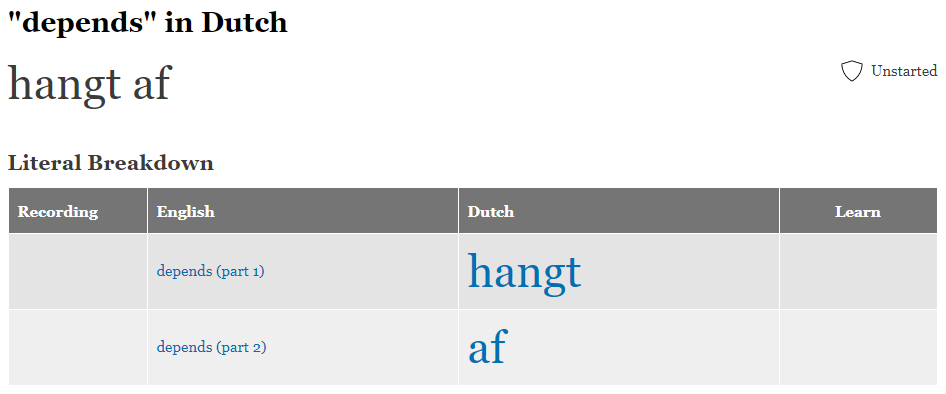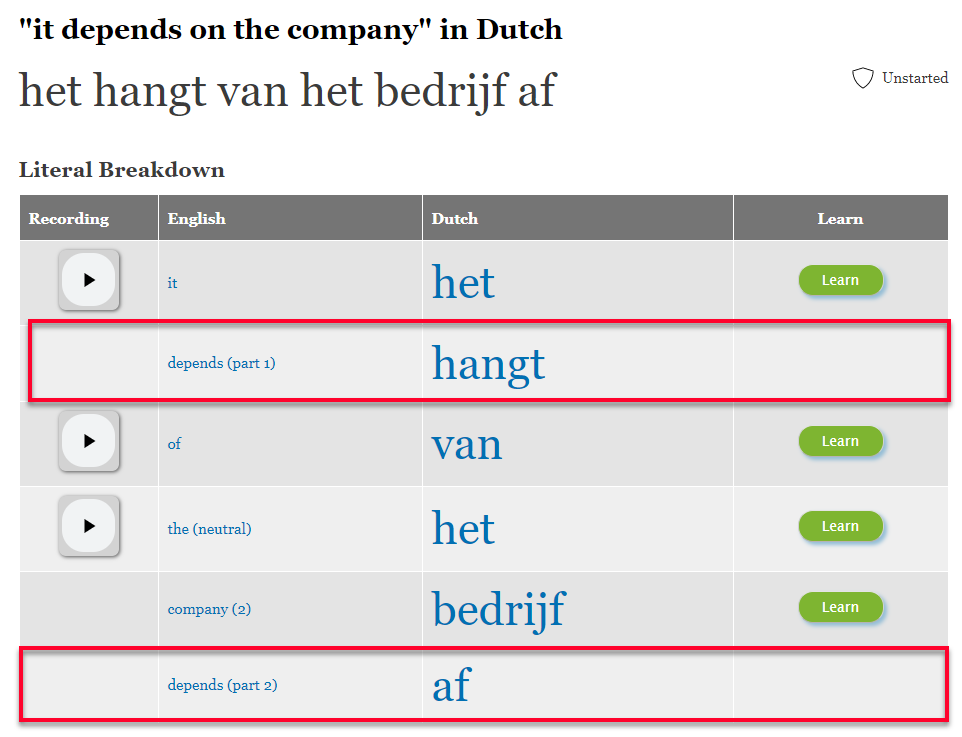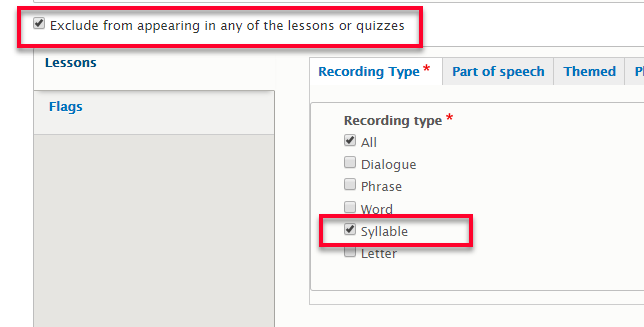Dutch, of course, has a lot of separable verbs. For example a verb like afhangen can split the part which means depends into hangt and af. In that case, how do we do the literal breakdown in a phrase like "het hangt van het bedrijft af"?
1. Create the infinitive entry
The first step is to make sure that we have an entry for the infinitive:
2. Create an entry for the split part
Then we create an entry especially for the split part:

3. Create a "See also" link from the split entry to the infinitive
One of the first things you should then add is a "See also" link from this "depends" (hangt af) entry to the entry for the infinitive "to depend" (afhangen). That is so that the student can learn that "hangt af" comes from the verb afhangen:

4. Add the Literal Breakdown items part 1 and part 2
The next thing to do is to add a literal breakdown of the two parts of "hangt af" into "hangt" and "af", and just label them part 1 and part 2 respectively:

Now we can use the two parts in the breakdown of the original phrase:

This is all a little complicated I know, but let's stop and think about how this all helps the student to understand the structure of the Dutch phrase.
In English you would say "It depends on the company". The student can see from looking at the Literal Breakdown that the "depends" part of this sentence is actually handled by two parts, "hangt" and "af".
When the student clicks on either "hangt" or "af" they get to the depends (hangt af) page where they can see the parts together.
In addition, when the student is doing quizzes, they would be quizzed on "hangt af". They might be asked what "depends" is in Dutch (to which the correct answer would be "hangt af"). They might be asked what "hangt af" in Dutch is in English (to which the correct answer is of course "depends").
Finally, when they are looking at the depends page, they can see that the verb which is behind all this is afhangen.
5. Exclude the sub-parts from appearing in quizzes
The last step is to make sure that the student doesn't get just half of the "hangt af" form thrown at them as a question.
That is, we do NOT want that the student is asked what "hangt" is, or what "af" is on their own. These may be words in their own right (meaning I suppose "hangs" and "off") but "depends" only really makes sense when you have both "hangt" and the "af" together in a sentence.
Therefore, on the "depends (part 1)" and the "depends (part 2)" entries, we mark them so that they will not ever appear in any quizzes on their own.
It is OK to quiz the student on "depends" as a complete unit, but not the bits which make it up.
To do this, there are 2 options:
- we select "Exclude from appearing in any of the lessons or quizzes"
- we select Recording type "Syllable"
In the image below we see actually both of these methods are used.

It is enough to use just one of these methods to exclude the sub-parts from a quiz, but you MUST use at least one. If not, the student would get weird questions like what does "af" mean in English and the answer would be "depends (part 2)", yet without the "hangt" for context it would be a very confusing question.
6. Summary
Separable verbs have been super-tricky to fit into the Lingopolo way of laying out a Literal Breakdown, but following this method described here does the job.
The various elements summarised:
- The original phrase with a separable verb: "it depends on the company = het hangt van het bedrijf af"
- The verb infinitive entry: "to depend = afhangen"
- The verb with the two parts: "depends = hangt af"
- The two parts: "depends (part 1)" and "depends (part 2)"
Further examples:
